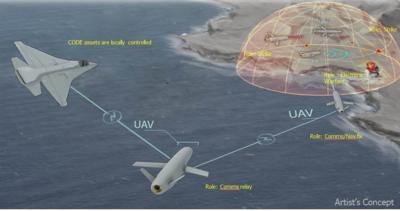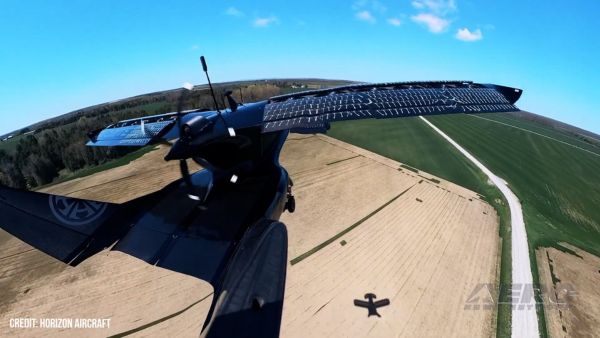Thu, Jan 29, 2015
Software Under Development Enabling Unmanned Aircraft To Work Together With Minimal Supervision
The U.S. military’s investments in unmanned aircraft systems (UAS) have proven invaluable for missions from intelligence, surveillance and reconnaissance (ISR) to tactical strike. Most of the current systems, however, require constant control by a dedicated pilot and sensor operator as well as a large number of analysts, all via telemetry. These requirements severely limit the scalability and cost-effectiveness of UAS operations and pose operational challenges in dynamic, long-distance engagements with highly mobile targets in contested electromagnetic environments.

DARPA’s Collaborative Operations in Denied Environment (CODE) program aims to overcome these challenges by developing algorithms and software that would extend the mission capabilities of existing unmanned aircraft well beyond the current state-of-the-art, with the goal of improving U.S. forces’ ability to conduct operations in denied or contested airspace. CODE researchers seek to create a modular software architecture that is resilient to bandwidth limitations and communications disruptions, yet compatible with existing standards and capable of affordable retrofit into existing platforms.
DARPA has released a Special Notice inviting interested parties to identify their interest in participation in select Phase 1 CODE meetings. DARPA is particularly interested in participants with capabilities, methodologies, and approaches that are related to CODE research and focused on revolutionary approaches to unmanned aircraft systems, autonomy and collaborative operations. Responses to the Special Notice will be used to select the participants and should not contain intellectual, confidential, proprietary or other privileged information.
Two meetings are currently planned: an Open Architecture Meeting and a Technology Interchange Meeting. The Open Architecture Meeting will review the requirements and approaches for making the CODE open architecture compatible with communication-constrained, distributed, highly autonomous collaborative systems. During the Technology Interchange Meeting, invited participants will present technologies for potential incorporation into the demonstration planned for Phases 2 and 3 of the program and ensure that CODE leverages the best available technologies from all possible sources.
The meetings are scheduled for the first week of March 2015 in the Arlington, VA, area.
(DARPA Image)
More News
From 2021: The Inside Skinny On What Being An ANN Oshkosh Stringer Is All About By ANN Senior Stringer Extraordinare, Gene Yarbrough The annual gathering at Oshkosh is a right of p>[...]
Pilot Asked The Mechanic To Go For A Test Flight Around The Airport Traffic Pattern With Him For A Touch-And-Go Landing, And Then A Full-Stop Landing On May 7, 2025, about 1600 eas>[...]
From 2010 (YouTube Edition): Skiles Reflects On His Ring-Side Seat To An Historic Event Jeff Skiles, First Officer of US Airways Flight 1549, "The Miracle on the Hudson," was the g>[...]
“The FAA conducted a comprehensive safety review of the SpaceX Starship Flight 8 mishap and determined that the company has satisfactorily addressed the causes of the mishap,>[...]
Fuel Remaining A phrase used by either pilots or controllers when relating to the fuel remaining on board until actual fuel exhaustion. When transmitting such information in respon>[...]
 Oshkosh Memories: An Aero-News Stringer Perspective
Oshkosh Memories: An Aero-News Stringer Perspective NTSB Prelim: Diamond Aircraft Ind Inc DA 40 NG
NTSB Prelim: Diamond Aircraft Ind Inc DA 40 NG Classic Aero-TV: US Airways Jeff Skiles-Making History and Looking To The Future
Classic Aero-TV: US Airways Jeff Skiles-Making History and Looking To The Future Aero-News: Quote of the Day (05.26.25)
Aero-News: Quote of the Day (05.26.25) ANN's Daily Aero-Term (05.26.25): Fuel Remaining
ANN's Daily Aero-Term (05.26.25): Fuel Remaining



